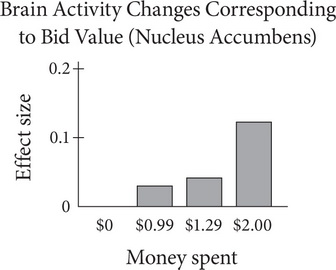PSAT 8/9 Reading Practice Test 1
Questions 1-9 refer to the following information.
This passage is adapted from Virginia Hughes, "Why Does Music Feel So Good?" ©2013 by National Geographic.
Music moves people of all cultures, in a way
that doesn't seem to happen with other animals.
Nobody really understands why listening to
Line music can trigger such profoundly rewarding
05experiences. Valorie Salimpoor and other
neuroscientists are trying to figure it out with the
help of brain scanners.
In today's issue of Science, Salimpoor's group
reports that when you listen to a song for the first
10time, the strength of certain neural connections
can predict how much you like the music, and
that these preferences are guided by what you've
heard and enjoyed in the past.
A few years ago, Salimpoor and neuroscientist
15Robert Zatorre performed another type of brain
scanning experiment in which participants
listened to music that gave them goosebumps or
chills. The researchers then injected them with
a radioactive tracer that binds to the receptors
20of dopamine, a chemical that's involved in
motivation and reward. With this technique,
called positron emission tomography or PET,
the researchers showed that 15 minutes after
participants listened to their favorite song, their
25brains flooded with dopamine.
The dopamine system is old, evolutionarily
speaking, and is active in many animals during
sex and eating. "But animals don't get intense
pleasures to music," Salimpoor says. "So we knew
30there had to be a lot more to it."
In the new experiment, the researchers used
functional magnetic resonance imaging (fMRI)
to track real-time brain activity as participants
listened to the first 30 seconds of 60 unfamiliar
35songs. To quantify how much they liked the music,
participants were given the chance to buy the full
version of each song using a computer program
resembling iTunes. The program was set up like
an auction, so participants would choose how
40much they were willing to spend on the song, with
bids ranging from $0 to $2.
Salimpoor began by giving 126 volunteers
comprehensive surveys about their musical
preferences. "We asked them to list all of the
45music they listen to, everything they like,
everything they've ever bought," Salimpoor says.
She ultimately scanned 19 volunteers who had
indicated similar preferences.
To create the list of unfamiliar songs,
50Salimpoor first looked at songs and artists
that showed up on many of the volunteers'
surveys. She plugged those choices into musical
recommendation programs, such as Pandora
and iTunes, to find similar but less well-known
55selections. She also asked people who worked
at local music stores what new songs they'd
recommend in those genres.
The brain scans highlighted the nucleus
accumbens, often referred to as the brain's
60'pleasure center', a deep region of the brain that
connects to dopamine neurons. It turns out that
connections between the nucleus accumbens and
several other brain areas could predict how much
a participant was willing to spend on a given song.
65So why is it that one person might spend $2 on
a song while another pans it? Salimpoor says it all
depends on past musical experiences. "Depending
on what styles you're used to — Eastern, Western,
jazz, heavy metal, pop — all of these
70have very different rules they follow, and they're
all implicitly recorded in your brain," she says.
"Whether you realize it or not, every time you're
listening to music, you're constantly activating
these templates that you have."
75Using those musical memory templates, the
nucleus accumbens then acts as a prediction
machine, she says. It predicts the reward that
you'll feel from a given piece of music based on
similar types of music you've heard before. If you
8080 like it better than predicted, it registers as intense
pleasure. If you feel worse than predicted, you feel
bored or disappointed.
Music, Salimpoor says, is an intellectual reward.
"It's really an exercise for your whole brain."
